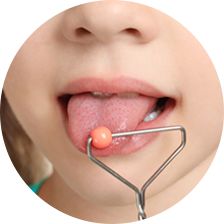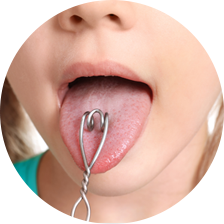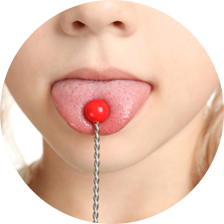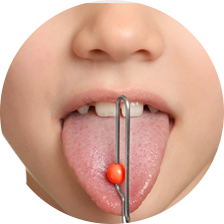address: 504 Main Street, Tell City, IN 47586
call us today: 812-772-2848

Our Services
Speech-language pathologists work with individuals who have problems with speech, language, thinking, and swallowing. Members of the American Speech- Language-Hearing Association make effective communication, a human right, accessible and achievable for all. As a certified member of the American Speech- Language and Hearing Association (ASHA), I have the skill set, knowledge, and experience to support gains in communication as well as feeding disorders.

Language Disorders
Language is made up of the words we use to share ideas and get what we want. Language includes speaking, understanding, reading, and writing.

Speech Sound Disorders
Articulation refers to how we say sounds and words. Articulation and phonology refer to the way sound is produced. An individual with an articulation disorder has problems forming speech sounds properly. A child with a phonological disorder can produce the sounds correctly, but may use them in the wrong place. This can include omission, substitution, distortion, and/or addition.

Apraxia of Speech (AOS)
(AOS)—also known as acquired apraxia of speech, verbal apraxia, or childhood apraxia of speech (CAS) when diagnosed in children—is a speech sound disorder. Someone with AOS has trouble saying what he or she wants to say correctly and consistently.
Learn more at: http://www.apraxia.kids.org

PROMPT Trained Clinician
As a PROMPT Trained clinician, I recognize the holistic nature of communication, which is
represented by the PROMPT Conceptual Framework. In order for functional communication to occur
these domains must interact. Motor speech production is the result of the coordinated actions between these domains and is consistent with the Dynamic Systems Theory (DST). In this, tactile-kinetic prompts are utilized to provide increased support for production of communication that is meaningful for the individual as well as their caregivers.
In addition to being PROMPT-certified, I have been trained to utilize the Beckman Oral Motor approach. Often the individual experiencing oral motor difficulties is not able to follow commands. The protocol developed by Beckman uses mechanical muscle responses, which are not mediated cognitively, to baseline the response to pressure and movement, range of movement, variety of movement, strength of movement and control of movement for the lips, cheeks, jaw, and tongue. From this, a systematic approach to learning can be determined to facilitate the most effective means to establish effective oral motor movements to communicate.
Learn more at: promptinstitute.com

Stuttering
We all have times when we do not speak smoothly. We may add “uh” or “you know” to what we say. Or, we may say a sound or word more than once. These are called disfluencies.
People who stutter may have more disfluencies and different types of disfluencies. They may repeat parts of words (repetitions), stretch a sound out for a long time (prolongations), or have a hard time getting a word out (blocks).
Stuttering is more than just disfluencies. Stuttering also may include tension and negative feelings about talking. It may get in the way of how you talk to others. You may
want to hide your stuttering. So, you may avoid certain words or situations. For example, you may not want to talk on the phone if that makes you stutter more.

Voice Disorders
We use our voice to make sounds. Our voice can change when we use it the wrong way. We can lose our voice when we are sick or after talking or yelling a lot. Signs that an individual may have a voice disorder include:
Having a hoarse, scratchy, or breathy voice.
Sounding nasal, or like they talk through their nose.

Dysphagia
Dysphagia is a term that means “difficulty swallowing.” It is the inability of food or liquids to pass easily from your mouth, into the throat, and through the esophagus
to the stomach during the process of swallowing.
Swallowing involves three stages, which are controlled by muscle and nerves that connect the oral cavity, upper airway, and digestive tract to their brain.
- Oral Preparation Stage
- Pharyngeal Stage
- Esophageal Phase

Sensory-Based Feeding Difficulties
Sensory-based feeding difficulties occur when an individual has difficulty accepting and eating foods or drink that have a certain texture, smell, taste and/or look. Individuals with sensory-based food aversions are often seen as ‘picky eaters’, however it is important to identify the particular difficulty and the
underlying cause in order to help the child build on the food they are able to eat in order to gain the right nutrition from their diets.
I am a certified-provider of VitalStim. VitalStim™ therapy is an innovative, non-traditional therapy that uses a small current, passing through external electrodes on the neck, to
stimulate inactive swallowing muscles. It is the only technology cleared by the FDA for restoring the swallowing function.

ADHD
I am a certified ADHD Professional with intensive training targeting evidence-based strategies for
managing ADHD across the lifespan.
ADHD is defined as “performance inconsistency”. It is a disorder of performance, not necessarily skill with top-down origins. Top-down refers to how our brains function. ADHD is not a bottom-up process in which the input of sensory information from the environment is received by our body. That being said, ADHD can co-occur with sensory integration disorder. A sensory integration disorder is a neurological disorder that results from the brain’s inability to integrate certain information received from the body’s sensory systems. Given this, completion of a sensory profile with analysis of sensations avoided and/or sought out is necessary.





Our process
Praesent eu tincidunt purus, sed convallis sem. Donec pharetra quam malesuad. Forbiden bist elen strenmo.

CH Sound
Praesent eu tincidunt purus, sed vallis sem tincid

SH Sound
Praesent eu tincidunt purus, sed vallis sem tincid

R Sound
Praesent eu tincidunt purus, sed vallis sem tincid

L Sound
Praesent eu tincidunt purus, sed vallis sem tincid
